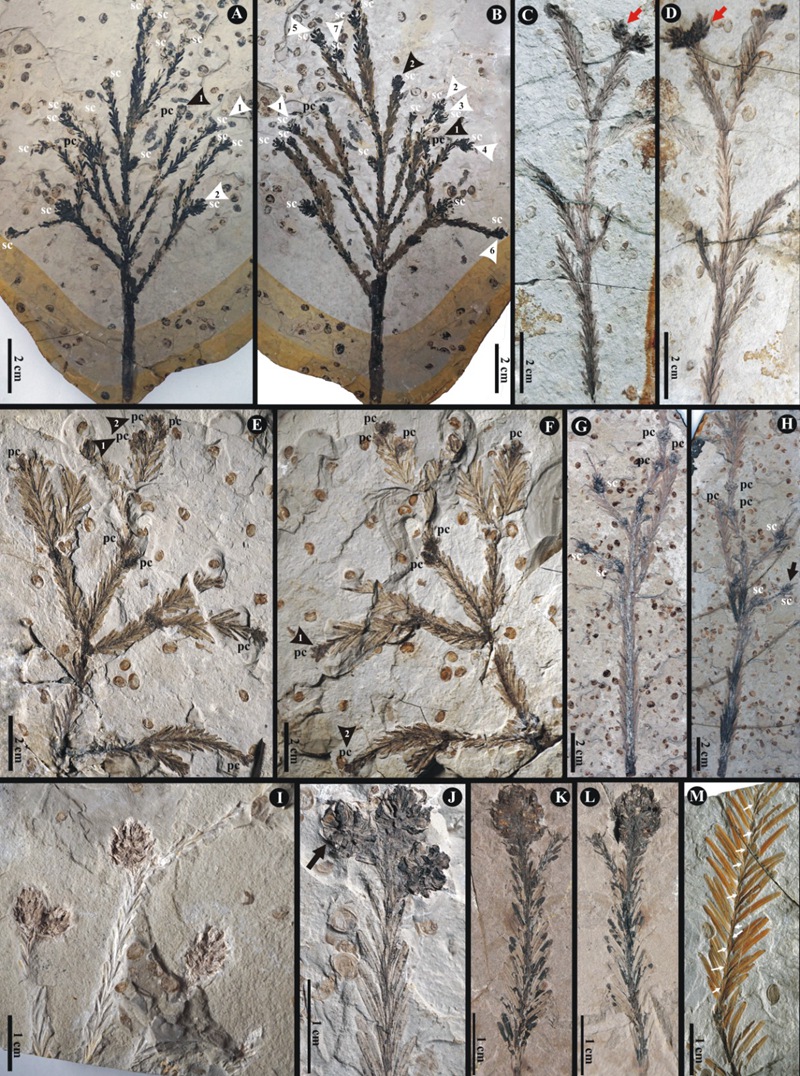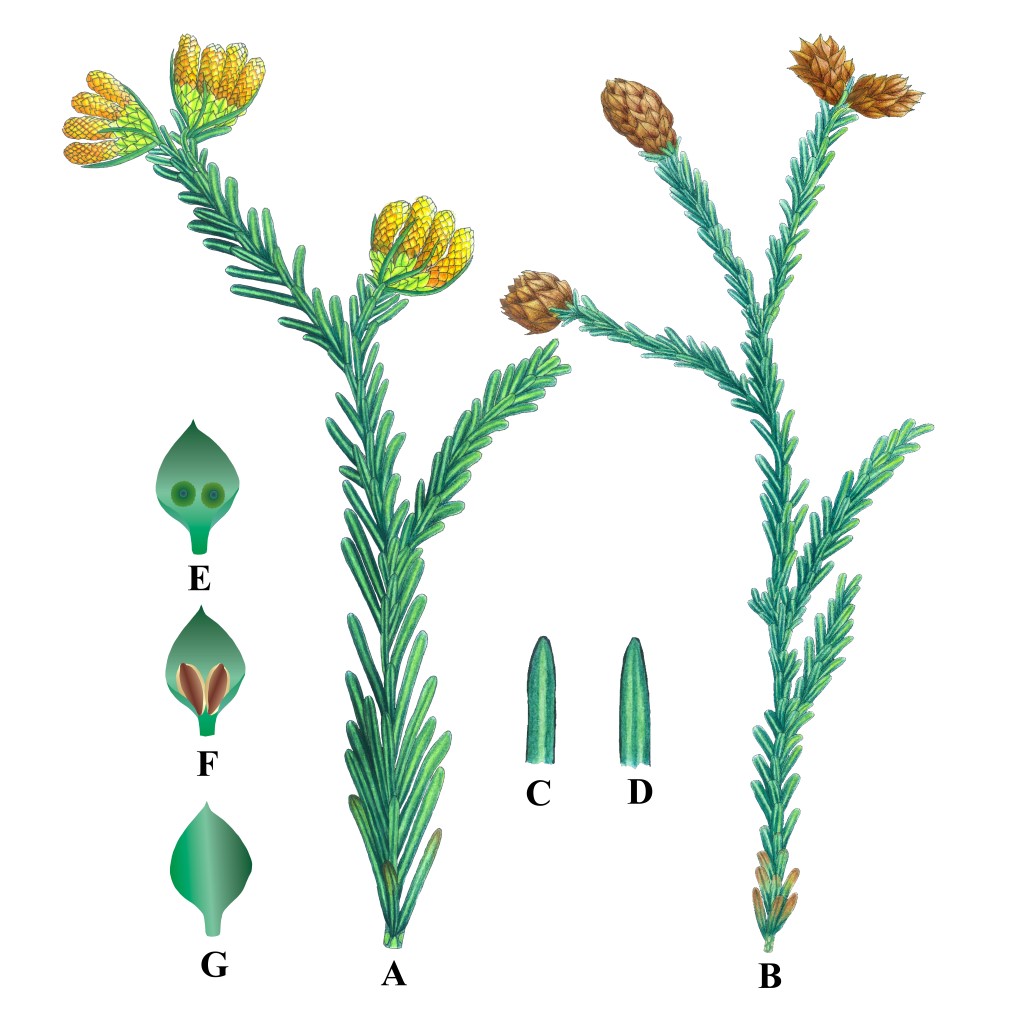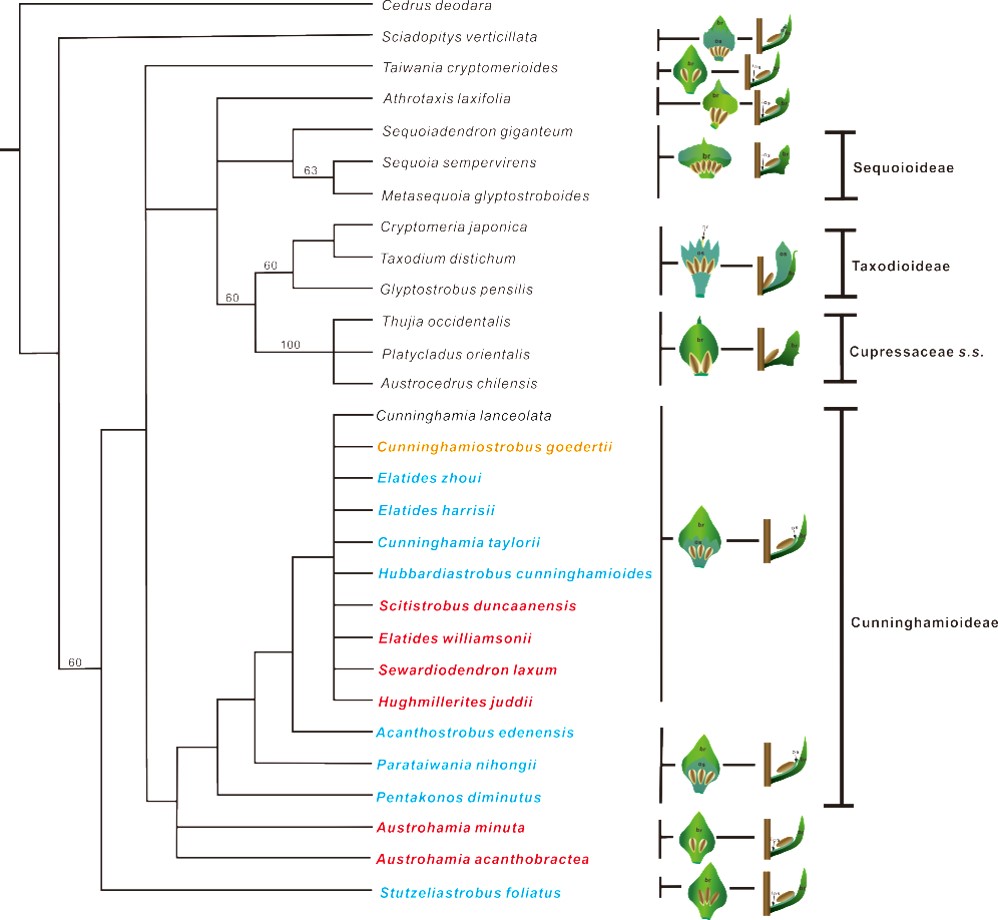
Some fossil specimens of Austrohamia acanthobractea from the Daohugou biota
The Cupressaceae is the only conifer family that distribute in all continents except for Antarctica, and it is especially remarkable for the diversity of morphology, species, and habitat preference exhibited by its members. The fossil record suggests that the ancestral groups of Cupressaceae originated during the Triassic. During the middle-late Mesozoic, the diversity and geographical distribution of Cupressaceae are crucial and the ancestors of all subfamilies appeared and differentiated. However, detailed investigations on morphology and anatomical characteristics of the Mesozoic Cupressaceae taxa are still very limited compared with their rich fossil record, which impede the understanding of the early morphological diversity and evolution of the middle-late Mesozoic Cupressaceae plants.
Recently, a research team of the Mesozoic plants represented by Dr. DONG Chong, Prof. WANG Yongdong and Prof. YANG Xiaoju from the Nanjing Institute of Geology and Palaeontology, Chinese Academy of Sciences (NIGPAS) provide new insight into the whole-plant reconstruction and phylogeny on Austrohamia acanthobractea —a Cupressaceae taxon from the Middle Jurassic Daohugou biota in northeastern China. The study revealed the exquisite details of the vegetative shoots and leaf cuticles, ovulate cones and in situ ovules, pollen cones and in situ pollen grains, providing a complete supplementary depiction on the morphological and anatomical information of this Jurassic cypress plant. The update result was recently published in “International Journal of Plant Science”, a well-known scientific journal published in University Press of Chicago in USA.

Whole-plant reconstruction of Austrohamia acanthobractea.
Austrohamia, the oldest macrofossil record of Cupressaceae was originally reported from the Early Jurassic in the Argentina of the southern Hemisphere. In addition to the type species, Austrohamia acanthobractea is the second fossil record of the genus. The co-occurrence of Austrohamia in the Jurassic of both the Southern and Northern Hemispheres appears to suggest an intercontinental disjunction between Gondwana and Laurasia. A. acanthobractea is the most common species among the plant fossils from the Daohugou biota. These rich and well-preserved fossil materials with many details makes it to be one of the most completely studied Jurassic Cupressaceae species.
In addition, by using the morphological cladistic analysis, the researchers show that the two species of Austrohamia form a polytomy with the expanded Cunninghamioideae clade This supports the original interpretation that the genus is closely related to Cunninghamia and Cunninghamia-like fossils. This study is of great significance for a comprehensive understanding of ancestor groups and diversity of early Cupressaceae.

Reconstructed phylogeny for Cupressaceae (left) and figures of bract-scale complexes (right).
The Daohugou Lagerstatte is well known for its rich and well-preserved fossil invertebrates, vertebrates and plants, and represents a deposit with some terrestrial elements. In contrast, detailed studies on systematics and diversity in some key plant fossil taxa of this biota is very poorly documented, thus needs more and urgent comprehensively study. This new result by DONG et al. will thus promote and deepen the investigation of key plant fossils in the Daohugou biota.
This study was supported by the Strategic Priority Research Program (B) of CAS and the National Natural Science Foundation of China.
Download:
